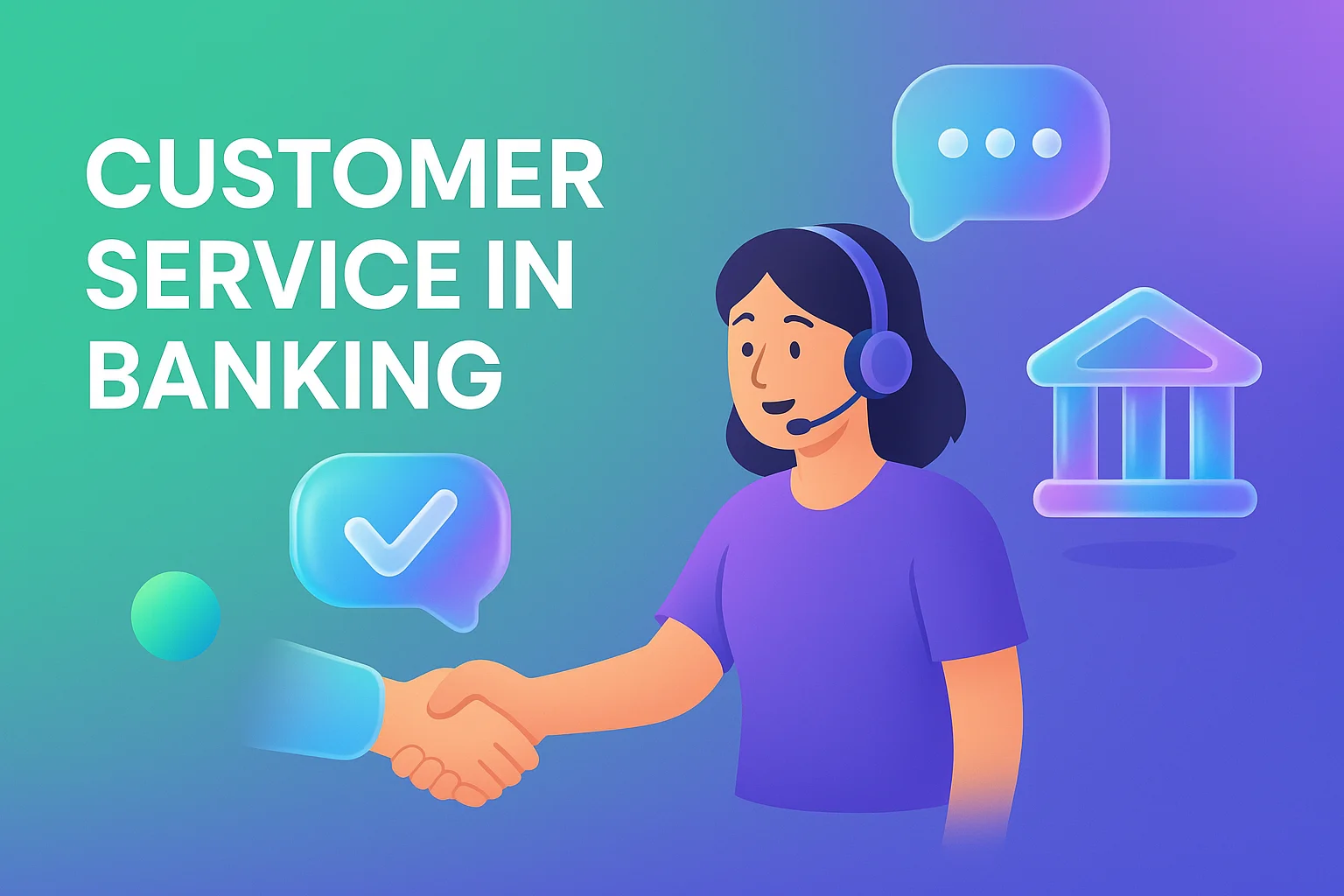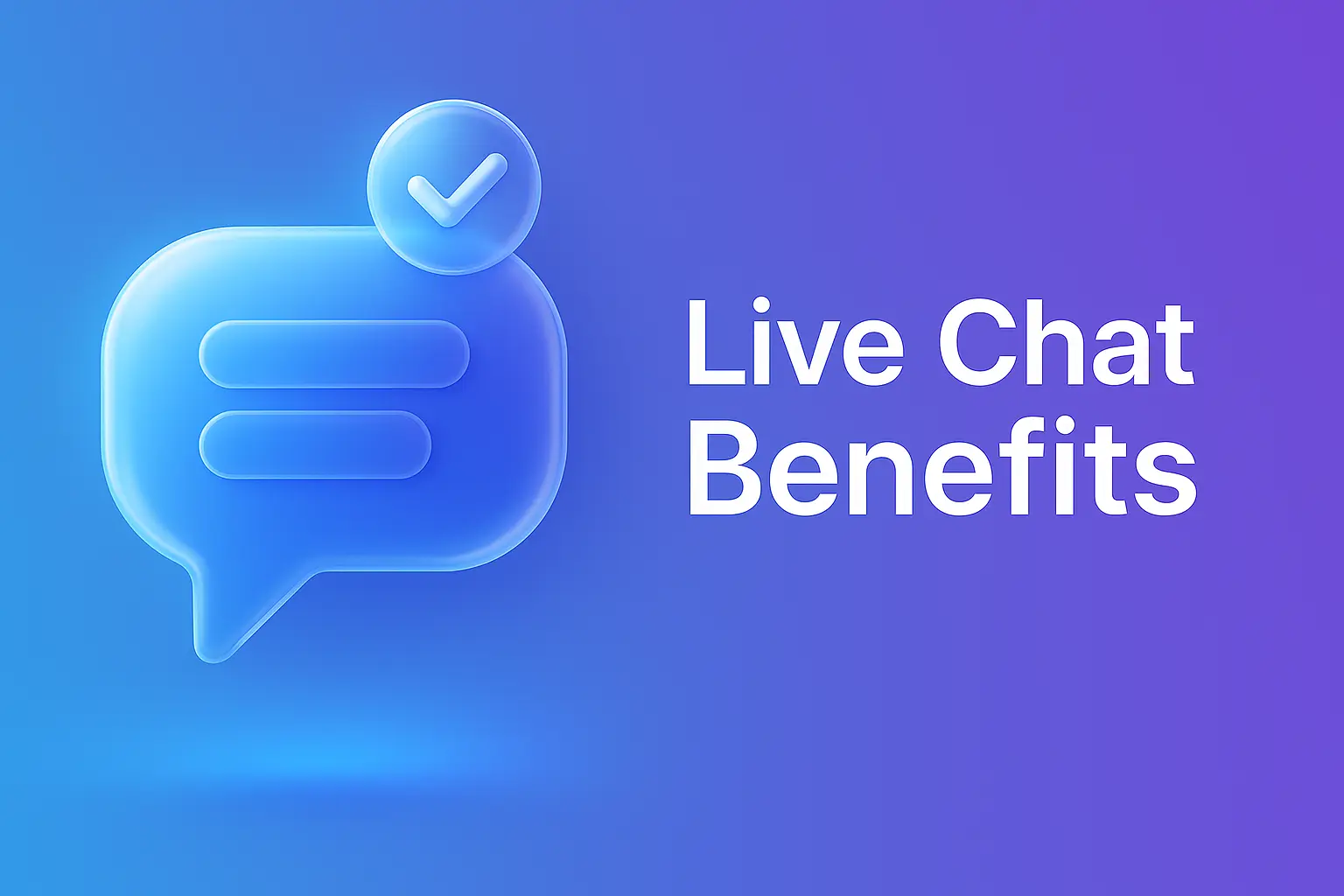Customer service in education: a complete guide
- June 18, 2025
- 10 mins read
- Listen
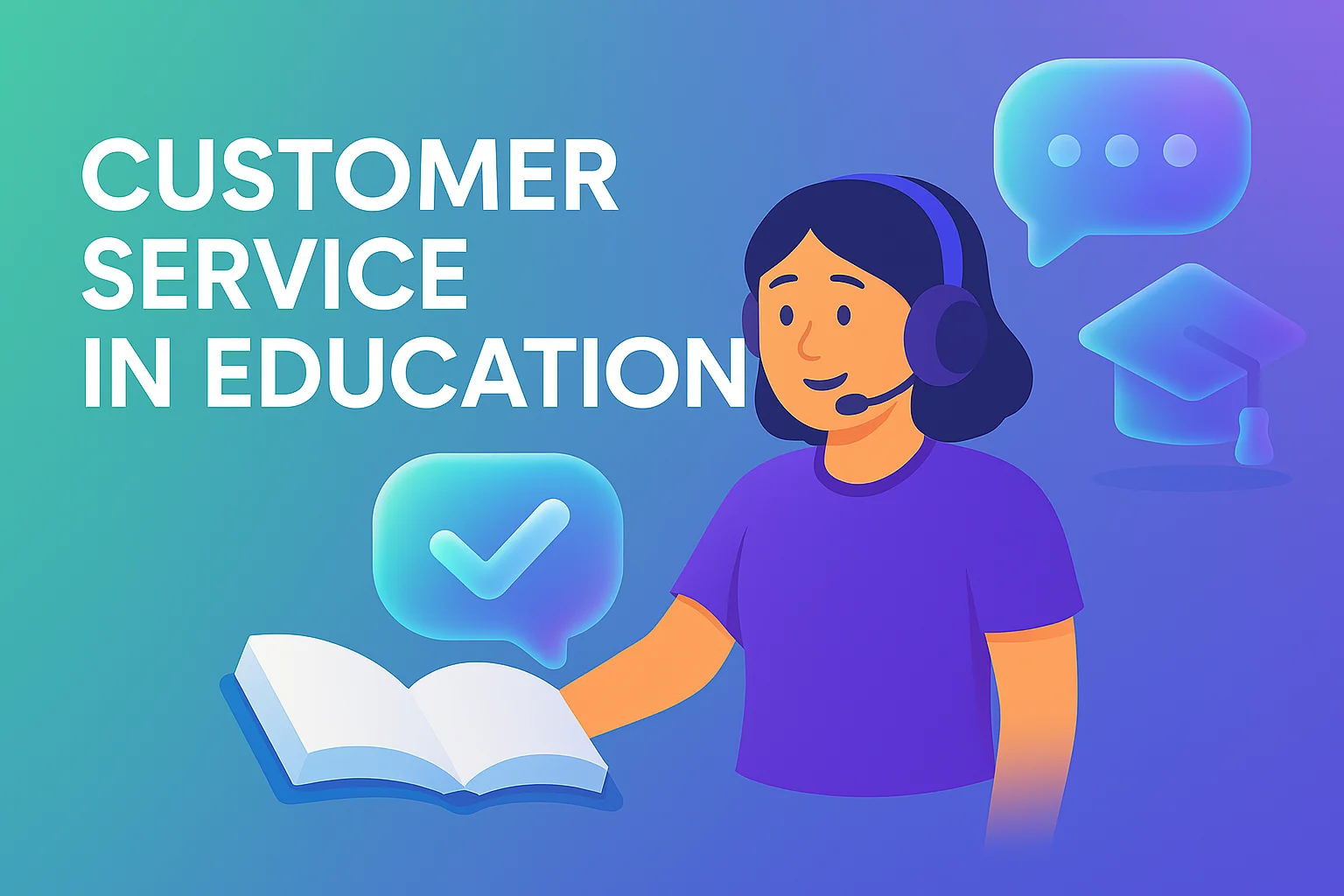
Imagine a parent struggling to get updates about their child’s admission status, a student who can’t find clear information about a specific course registration, or an applicant waiting endlessly for a response to their inquiry.
Without proper customer service, these small roadblocks become major pain points for both the students, their parents, and educational institutions. Thus damaging trust, hampering enrollment, and creating negative word-of-mouth.
Apart from that, educational establishments face a unique set of challenges, such as managing high volumes of inquiries daily, meeting the diverse needs of students, and ensuring smooth administrative processes. That’s why excellent customer service in education isn’t just a plus point, it’s essential for greater efficiency.
Let’s discuss the importance of customer service in higher education and different ways to improve it.
What is customer service in education?
In educational institutions, customer service is about more than just answering questions, it’s about building smooth, supportive interactions with students, parents, and teachers alike.
For students, this means clear communication, quick help when necessary, personalized assistance, and easy access to guidance and resources. For parents, it’s about staying informed, receiving timely updates on their child’s progress, and feeling confident about the institution their child is enrolled in.
Lastly, for teachers, good service ensures access to the tools and support they need, efficient processes, and opportunities to give feedback or grow professionally. When these groups feel heard and supported, the entire learning environment thrives.
Benefits of customer service in the education sector
In schools, colleges, or other educational institutions, exceptional customer service is a powerful way to show care and commitment towards students and their families. When parents feel heard and students feel supported, it builds trust, strengthens relationships, and reflects the institution’s dedication to their success and well-being.
That said, let’s go through the key benefits of providing great customer service in the education sector.
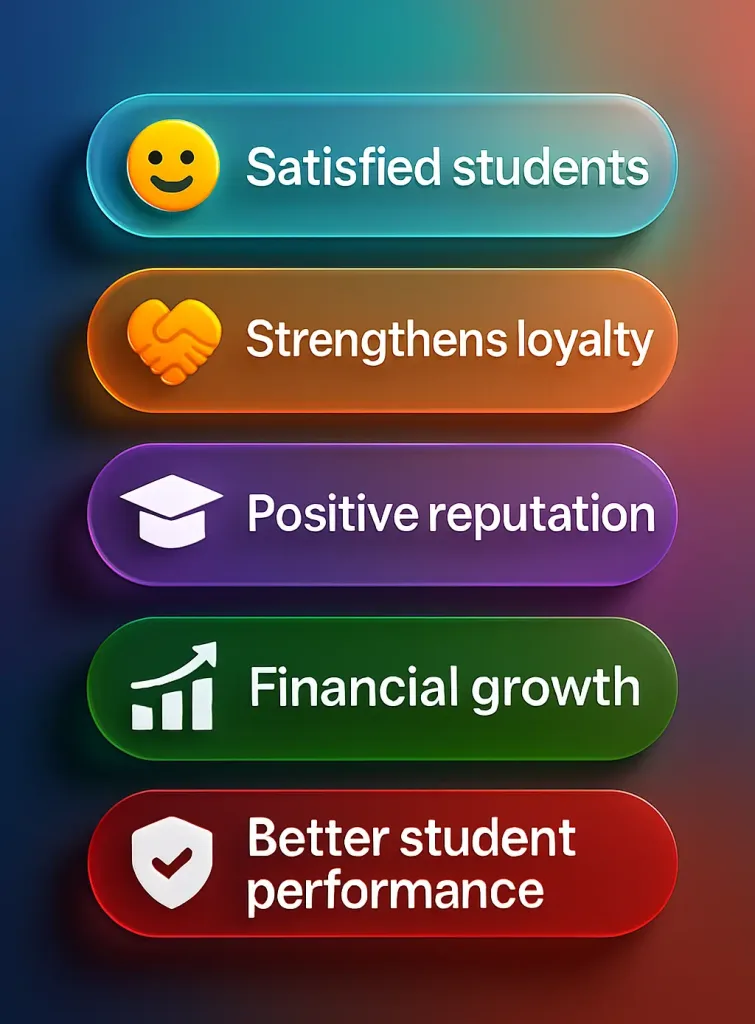
Exceptional support leads to satisfied students
When your educational institution’s customer service aligns with what students truly need and expect, it leads to a more satisfying and enjoyable experience. Whether it’s quick support, clear communication, or personalized guidance, assisting students when needed makes them feel valued, understood, and empowered.
Quality service strengthens student loyalty
Providing personalized customer support helps build deeper trust and lasting loyalty between the institution and both students and parents. When they feel that their needs are understood and addressed, they develop a stronger connection and commitment towards your institution.
Helps build a positive reputation
The reputation of an educational institution isn’t built overnight. You need to shape it by the success stories, and show genuine care towards your students, their parents, staff, and even teachers. By delivering excellent customer service, you can achieve it all.
The impact is huge. When parents have a positive experience with your institute, they will recommend it to others, and students are more likely to entice their friends as well. Also, teachers are more inclined to join the faculty and overall improve the quality of their educational capabilities.
Word-of-mouth becomes one of the most powerful tools in strengthening and spreading your institute’s reputation.
Opens doors to more funding and financial growth
When more students join a school or college, it brings in more funding through tuition fees. This helps the educational institution grow financially. But if students and parents don’t feel supported, they may leave, and new students may not want to enroll at all.
That’s why offering great customer service matters. It also attracts more donations and lets your institution provide more scholarship opportunities, which makes education more affordable for families and helps more students attend school without worrying about costs.
Supports better student performance and overall success
Customer service plays a big role in helping students grow academically. Through customer service, you can provide the right learning materials, offer help when students are struggling, listen closely to their concerns, and respond with timely, meaningful feedback.
10 best ways to enhance customer service in the education industry
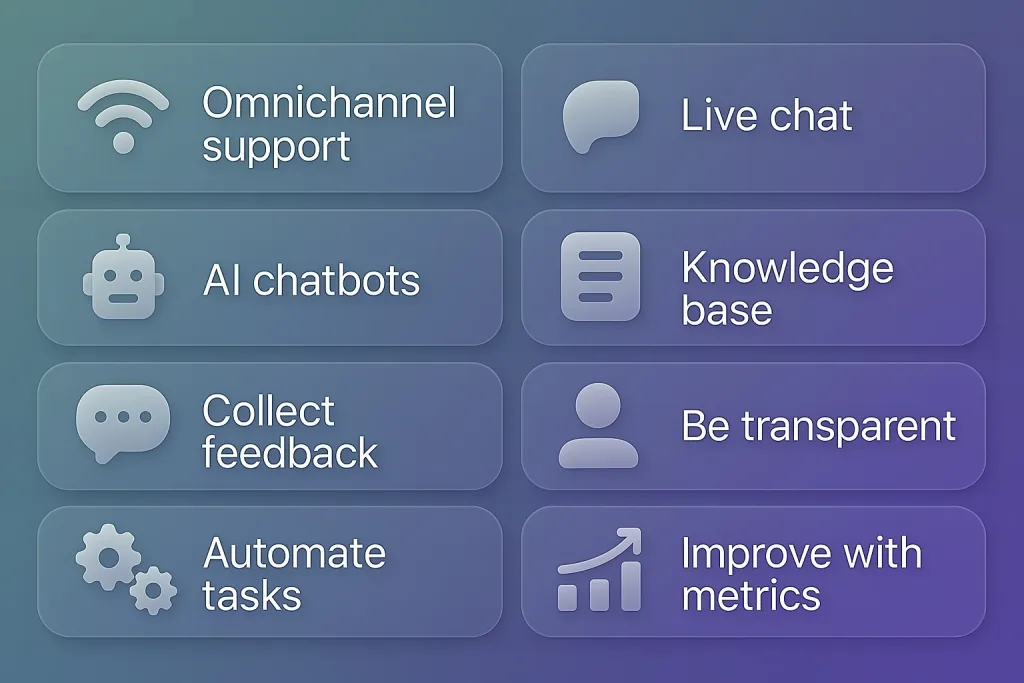
Providing excellent customer service is essential for educational institutions aiming to build trust, boost enrollment, and retain students. Here are ten practical ways to upgrade your service experience:
1. Offer omnichannel support across all touchpoints
Unify student and parent communications through email, chat, social media, and phone into one platform. It simplifies support and ensures timely, consistent responses.
2. Leverage live chat for real-time engagement
Live chat provides instant access to support, reducing wait times and offering immediate assistance across departments. This way, students and teachers are able to receive the support they need and parents can gather educational information with ease.
3. Deploy AI chatbots for 24/7 assistance
Chatbots can handle admissions, course queries, fees, and more, providing round-the-clock support and reducing the workload on human agents.
4. Build a self-service knowledge base
A well-organized self-support system with FAQs, guides, videos, and other educational materials allows students to find answers independently without having to wait for classes or a teacher to reply personally.
5. Collect feedback from students and parents
Automated surveys and reviews help identify gaps in service quality and show students and families that their voices matter.
6. Ensure clear and transparent communication
Keep students and parents informed with timely, accurate updates on admissions, fees, schedules, and academic policies.
7. Create personalized experiences
Use engagement history and CRM data to tailor communication and support, making interactions more relevant and meaningful for students and parents.
8. Invest in ongoing staff training
Regular training in communication, problem-solving, and empathy ensures your support team stays sharp and student-focused.
9. Automate routine interactions
Automated workflows like ticket routing, reminders, and responses help streamline support and free up staff time for more complex needs.
10. Monitor and improve through metrics
Track key metrics such as satisfaction scores, resolution times, and chatbot performance to refine your support strategy continuously.
Great customer service is no longer optional in education, it’s a key differentiator. By focusing on responsiveness, personalization, and seamless communication, institutions can create positive experiences that keep students and parents engaged and satisfied.
Common support issues in education and how to fix them
Educational institutions often face recurring customer service challenges that can affect student satisfaction and the overall learning experience. Here are some common support issues—and practical ways to resolve them:
Poor complaint handling
Many times, issues don’t get resolved with care or empathy. Students or parents are left with dissatisfaction and confusion. It can damage the trust and reputation of your educational institution.
How to fix it: Train your customer support reps with active listening and conflict resolution skills. Encourage them to resolve issues on the spot or escalate them appropriately, and always follow up to ensure the problem is truly resolved.
Limited availability outside business hours
Students with tight schedules or living in different time zones often find it difficult to get the help they need when support is only available during standard working hours. As a result, their questions may go unanswered for long periods, leading to frustration and delays.
How to fix it: To bridge the gap, consider extending your support hours during high-demand periods like enrollment or exam seasons. Additionally, implement 24/7 automated support tools like chatbots that can handle common queries instantly, no matter the time or location.
Lack of clear information
Confusion around fees, policies, course requirements, or academic calendars can lead to frustration.
How to fix it: Maintain an up-to-date knowledge base or FAQ section on your website. Use simple, accessible language and proactively communicate any changes through email or SMS updates.
Balancing digital convenience with data security
As more educational institutions increasingly adopt various digital tools for customer service, the responsibility to protect sensitive student and parent information also grows. Both public and private institutions must balance the benefits of technology with the risks of data breaches and privacy violations.
How to fix it: Implement robust data protection policies and choose education platforms that comply with privacy regulations like FERPA or GDPR. Regularly train staff on cybersecurity best practices and ensure that all systems are secure, encrypted, and updated.
Language and cultural barriers
Students from all around the world will come to your institution. In such a diverse educational environment, language differences or cultural misunderstandings can create communication gaps and impact the quality of support.
How to fix it: Provide multilingual support where possible, through translated materials, language preferences in chatbots, or hiring bilingual staff.
Real-life examples of exceptional customer service in education
Next, let’s explore how some of the most forward-thinking educational institutions are redefining customer service at its best. From personalized mentorship to 24/7 instant assistance, these standout examples show how going the extra mile can make a lasting impact on student success.
Ambridge University: Making enrollment easy for students
For Ambridge University, it is important for them to be able to provide proper education support to students for taking courses, gathering academic information, reaching out to relevant departments, and more. Thus, with REVE Chat, Ambridge University is able to serve students better by using our solutions to:
- Allow students to register and unregister from courses easily
- Gather information about class schedules and other relevant details
- Apply for financial aid or get information about the guidelines for getting one.
- General academic information assistance
- Directing to relevant educational staff and departments as needed
With our platform, Ambridge University is able to provide its students with the education support they need.
10 Minute School: Promoting Education Through Technology
An institution dedicated to serving the masses, 10 Minute School’s mission is to promote education and create a better world. Given that they are an Edtech company, it is hard to serve a large student base without some software assistance.
This is where we have provided 10 Minute School with a lot of value in terms of making it easy to provide academic support to their consumers. With our ticketing and live chat solutions, 10 Minute School is providing users with:
- Easy access to educational material
- Transparent pricing models for free or paid courses
- Personalized and multilingual support
- Proactively reaching out to students to provide assistance
- Technical troubleshooting
With REVE Chat, 10 Minute School is able to support students in a multitude of ways, allowing them to succeed as an institution.
Wrapping Up!
Meeting the demand for excellent customer service in the education industry and treating students as customers doesn’t demand sacrificing academic standards. It is because the tenets of good customer service, i.e., responsiveness, efficiency, clear communication, and conflict management, have little to do with academic processes.
With smart customer support solutions like REVE Chat, educational institutions can simplify communication, handle inquiries more efficiently, offer instant assistance around the clock, and reduce the daily workload on customer support reps. It also makes it easy to monitor and manage the entire customer service process in one place.
Sounds interesting? Book a demo with REVE Chat now and discover how it can transform the way your educational institute connects and supports its community.
Frequently Asked Questions
Customer service in the education industry differs from traditional business customer service because of its audience, goals, and emotional impact. In education, the ‘customers’ include students, parents, and teachers. Here, the customer service is mainly focused on guidance, support, and long-term development rather than quick transactions or sales.
Unlike traditional businesses, where efficiency and profitability are key, educational institutions prioritize personalized support for a positive learning environment.
Schools and universities can offer personalized support by understanding each student’s requirements, drawbacks, and providing help like extra tuition, mentoring, or flexible learning options. At the same time, they can keep academic standards high by making sure all students still meet the same learning goals and expectations. This approach helps students succeed without lowering the quality of education.
Technology plays a big role in improving customer service in education by making communication faster, easier, and more personalized. Tools like chatbots and live chat enable students and parents to receive quick assistance with their queries at any time, on any platform, including websites, mobile apps, and other social media channels.
Smaller educational institutions with limited budgets can still offer excellent customer service by prioritizing personalized interactions, training staff in communication best practices, and using advanced tools for instant assistance like chatbots and live chat.

